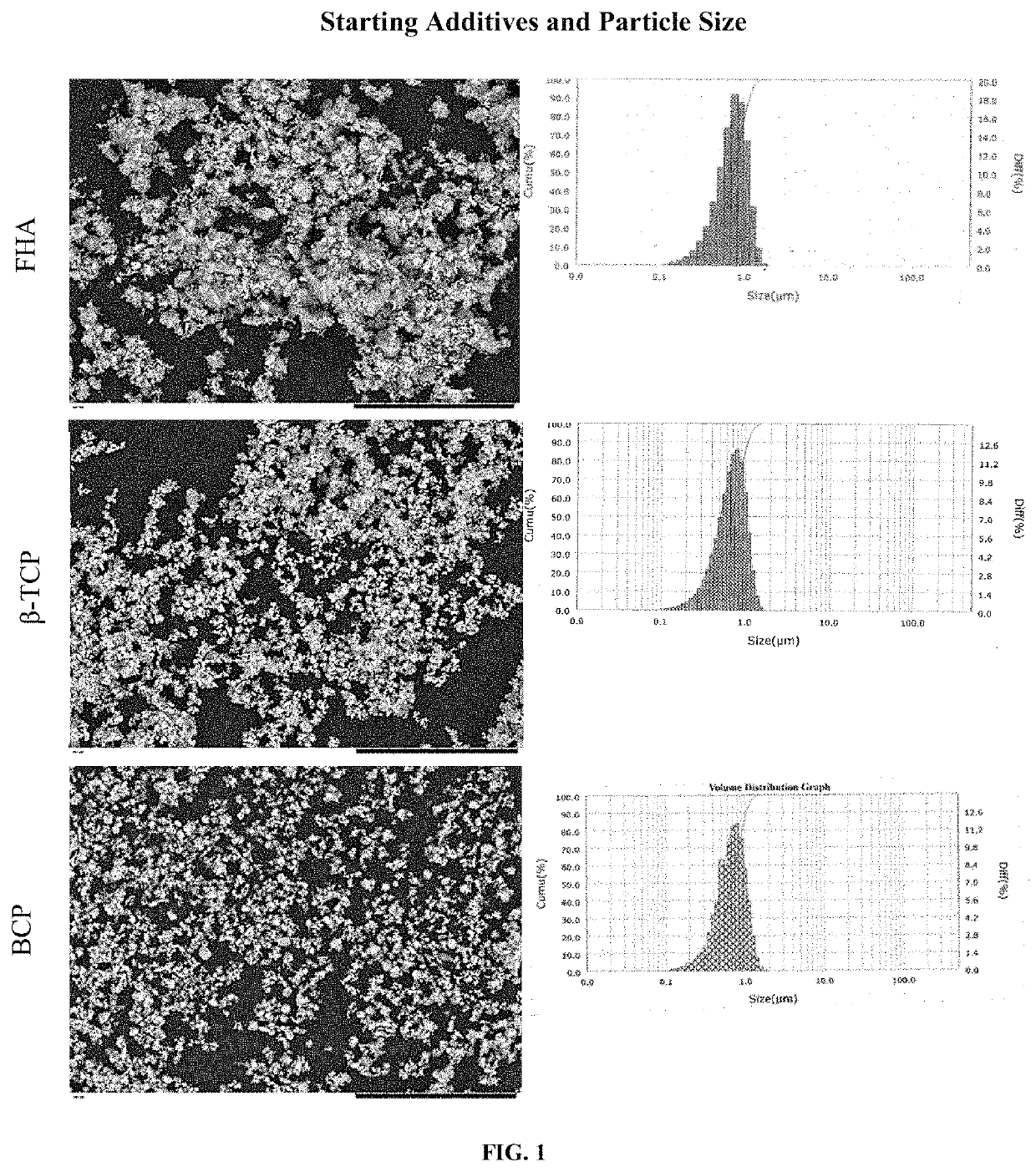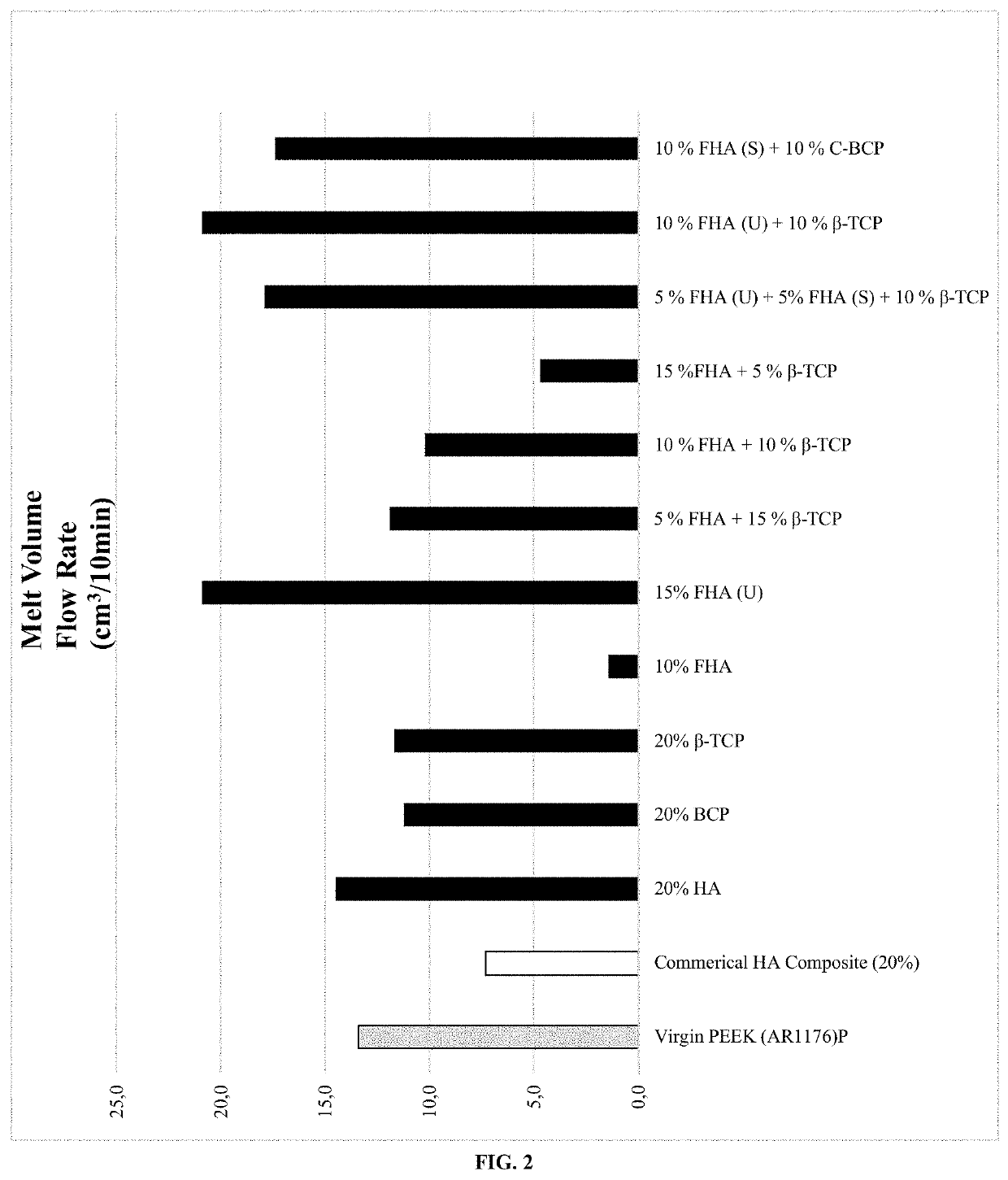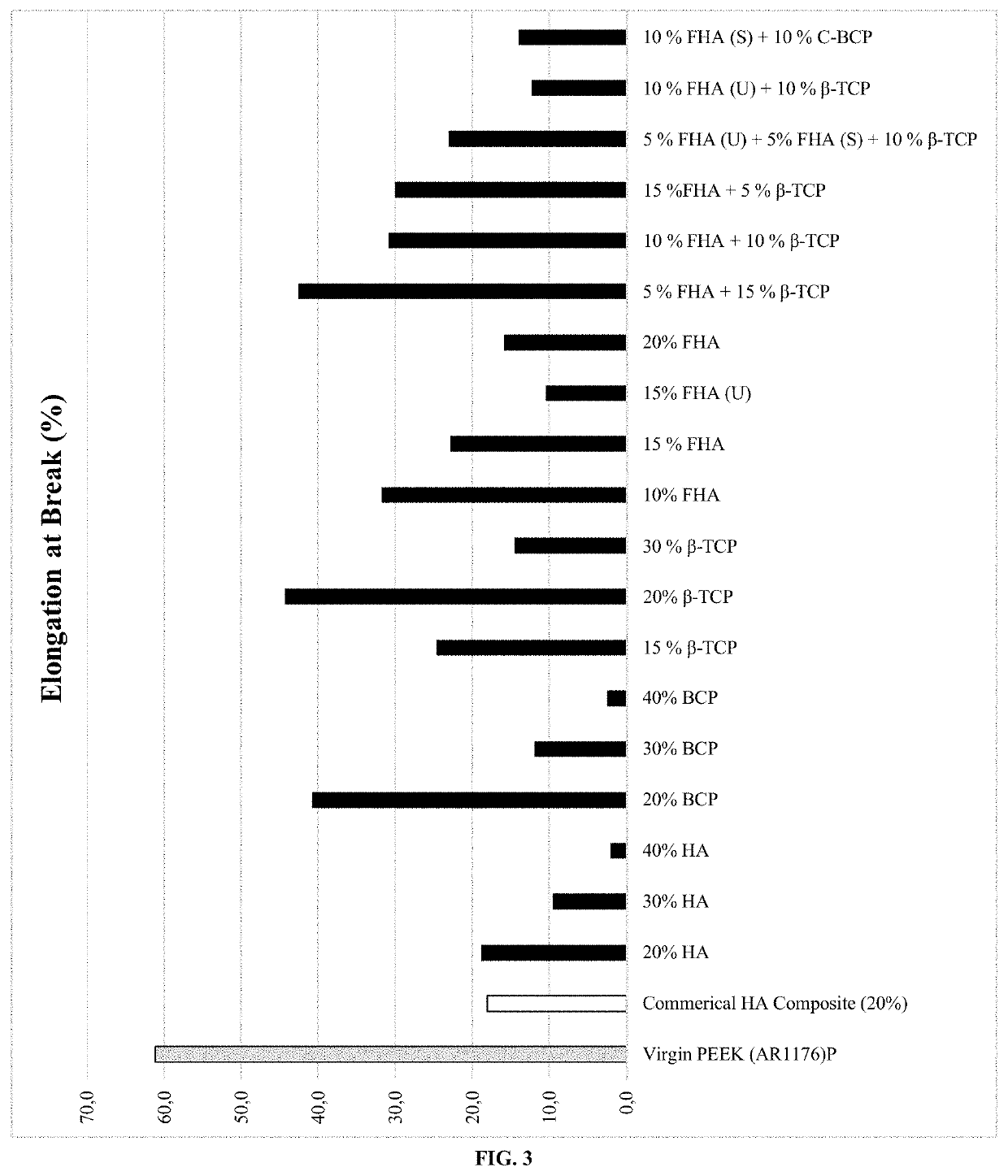Thermoplastic materials incorporating bioactive inorganic additives
a bioactive inorganic additive and thermoplastic material technology, applied in the field of thermoplastic materials incorporating bioactive inorganic additives, can solve the problems of reducing the processability and mechanical properties of materials, reducing the flowability of blends, and reducing paek materials to initiate positive biological responses, so as to enhance bioactivity, ductility and strength, and enhance processability.
- Summary
- Abstract
- Description
- Claims
- Application Information
AI Technical Summary
Benefits of technology
Problems solved by technology
Method used
Image
Examples
example 1
[0054]The polyetheretherketone (PEEK), was compounded with 20% by weight hydroxyapatite (HA).
[0055]The mixture was compounded together by first blending the powders physically through the use of an inversion blender. The blended materials were then dried at a furnace temperature of 160° C. for 4 hours until moisture content reached less than 500 ppm as determined by use of a Computrac® Vapor Pro® Moisture Analyzer.
[0056]The physically blended, dried powders were then compounded together through thermal processing using a conventional melt extrusion apparatus. Under these conditions, the die temperature is maintained at 410° C. at which temperature the PEEK is molten and the HA is not changed morphologically. The resulting blend was extruded into forms for further processing such as molding, extruded stock shapes, etc.
example 2
[0057]PEEK powder was compounded with 20% by weight biphasic calcium phosphate (BCP) in a manner similar to EXAMPLE 1.
[0058]The mixture was compounded together by first blending the powders physically through the use of an inversion blender. The blended materials were then dried at a furnace temperature of 160° C. for 4 hours until moisture content reached less than 500 ppm as determined by use of a Computrac® Vapor Pro® Moisture Analyzer.
[0059]The physically blended, dried powders were then compounded together through thermal processing using a conventional melt extrusion apparatus. Under these conditions, the die temperature is maintained at 410° C. at which temperature the PEEK is molten and the BCP is not changed morphologically. The resulting blend was extruded into forms for further processing such as molding, extruded stock shapes, etc.
example 3
[0060]PEEK powder was compounded with 20% weight β-tricalcium phosphate (β-TCP) in a manner similar to EXAMPLE 1 and EXAMPLE 2.
[0061]The mixture was compounded together by first blending the powders physically through the use of an inversion blender. The blended materials were then dried at a furnace temperature of 160° C. for 4 hours until moisture content reached less than 500 ppm as determined by use of a Computrac® Vapor Pro® Moisture Analyzer.
[0062]The physically blended, dried powders were then compounded together through thermal processing using a conventional melt extrusion apparatus. Under these conditions, the die temperature is maintained at 410° C. at which temperature the PEEK is molten and the β-TCP is not changed morphologically. The resulting blend was extruded into forms for further processing such as molding, extruded stock shapes, etc.
PUM
| Property | Measurement | Unit |
|---|---|---|
| diameter | aaaaa | aaaaa |
| diameter | aaaaa | aaaaa |
| diameter | aaaaa | aaaaa |
Abstract
Description
Claims
Application Information
 Login to View More
Login to View More - R&D
- Intellectual Property
- Life Sciences
- Materials
- Tech Scout
- Unparalleled Data Quality
- Higher Quality Content
- 60% Fewer Hallucinations
Browse by: Latest US Patents, China's latest patents, Technical Efficacy Thesaurus, Application Domain, Technology Topic, Popular Technical Reports.
© 2025 PatSnap. All rights reserved.Legal|Privacy policy|Modern Slavery Act Transparency Statement|Sitemap|About US| Contact US: help@patsnap.com



